Overview
This article highlights the essential VA disability claims that every veteran should be aware of. We understand that navigating this process can be overwhelming, which is why thorough documentation and a solid grasp of the claims process are so crucial. Specific conditions like tinnitus, PTSD, and hearing loss are emphasized, as they significantly impact many veterans' lives.
Successful claims often hinge on detailed medical records and personal statements that illustrate how these conditions affect daily life. By sharing your story, you can strengthen your case and improve your chances of receiving the benefits you rightfully deserve. Remember, you are not alone in this journey; we’re here to help you every step of the way.
Introduction
Navigating the labyrinth of VA disability claims can feel overwhelming for many veterans. We understand that with numerous conditions and complex processes to grasp, it’s crucial for former service members to be well-informed about the most common claims they may encounter. This article delves into ten prevalent VA disability claims, offering valuable insights and strategies to enhance your chances of successful applications.
But what happens when the very system designed to support you becomes a source of frustration and confusion? Exploring these claims not only sheds light on the benefits available but also empowers you to tackle the challenges of the claims process with confidence. Remember, you are not alone in this journey.
Turnout: Streamline Your VA Disability Claims Process
Turnout is transforming how former military personnel manage their . By harnessing the power of , the process becomes more streamlined and efficient. With Jake, the , individuals can effectively handle their requests, ensuring that all necessary documentation is promptly submitted and that they are kept updated at every stage. This innovative approach alleviates the , significantly enhancing the chances of achieving the benefits they rightfully deserve.
We understand that navigating the common process can be daunting. The integration of AI simplifies this journey while addressing common VA disability claims that veterans face. For instance, the typical processing duration for requests has improved remarkably, with the age of MRCA Initial Liability submissions decreasing from 210.9 days to 186.2 days in recent months. Such advancements reflect a genuine commitment to minimizing delays and .
Veterans have shared their positive experiences with this technology. Many express that the clarity and speed provided by AI tools have made their journey more manageable. This sentiment resonates in testimonials that highlight the quick and effective responses received when utilizing AI-driven platforms.
Furthermore, for former military personnel showcase its potential to reshape . By focusing on impactful strategies and proactive communication, Turnout's model not only empowers former service members but also fosters a supportive environment for navigating the complexities of common VA disability claims. As the VA continues to enhance its systems, the role of AI in improving the experiences of former military personnel becomes increasingly clear. Remember, you are not alone in this journey—we're here to help.
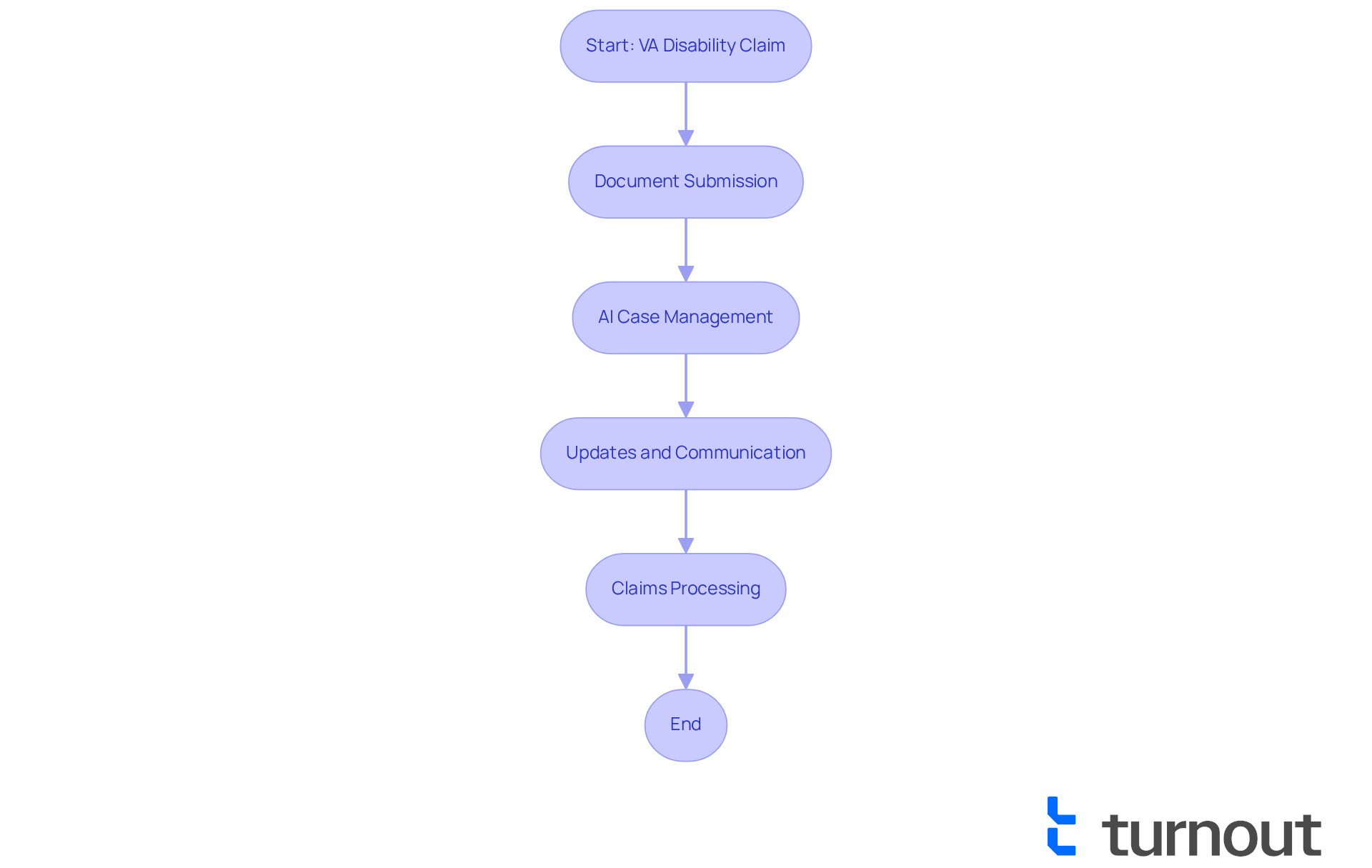
Tinnitus: Understanding the Most Common VA Disability Claim
Tinnitus, often described as a ringing or buzzing in the ears, is a common concern for many former military personnel. This condition frequently arises from exposure to loud sounds during service. If you are among those affected, obtaining benefits for tinnitus requires you to provide compelling of your condition and demonstrate how it impacts your daily life. In fiscal year 2023, nearly 2.9 million former military personnel received compensation for , showcasing the recognition of this condition within the VA system.
We understand that tinnitus can disrupt your , making it difficult to concentrate, sleep, and enjoy life. The , with many experiencing increased anxiety and stress due to their symptoms. To strengthen your case, it’s important to gather comprehensive medical records, including:
- Audiological assessments
- Treatment histories that detail the onset and severity of your tinnitus
Real-life stories illustrate the approval process for . For example, one dedicated service member who provided extensive documentation of their symptoms, including a history of loud noise exposure during service, successfully secured benefits after an initial denial. This case underscores the importance of presenting clear and detailed medical evidence to support your claims.
can greatly enhance your chances of approval. It’s crucial to be informed and prepared as you take this important step. Remember, you are not alone in this journey, and we are here to help you through it.
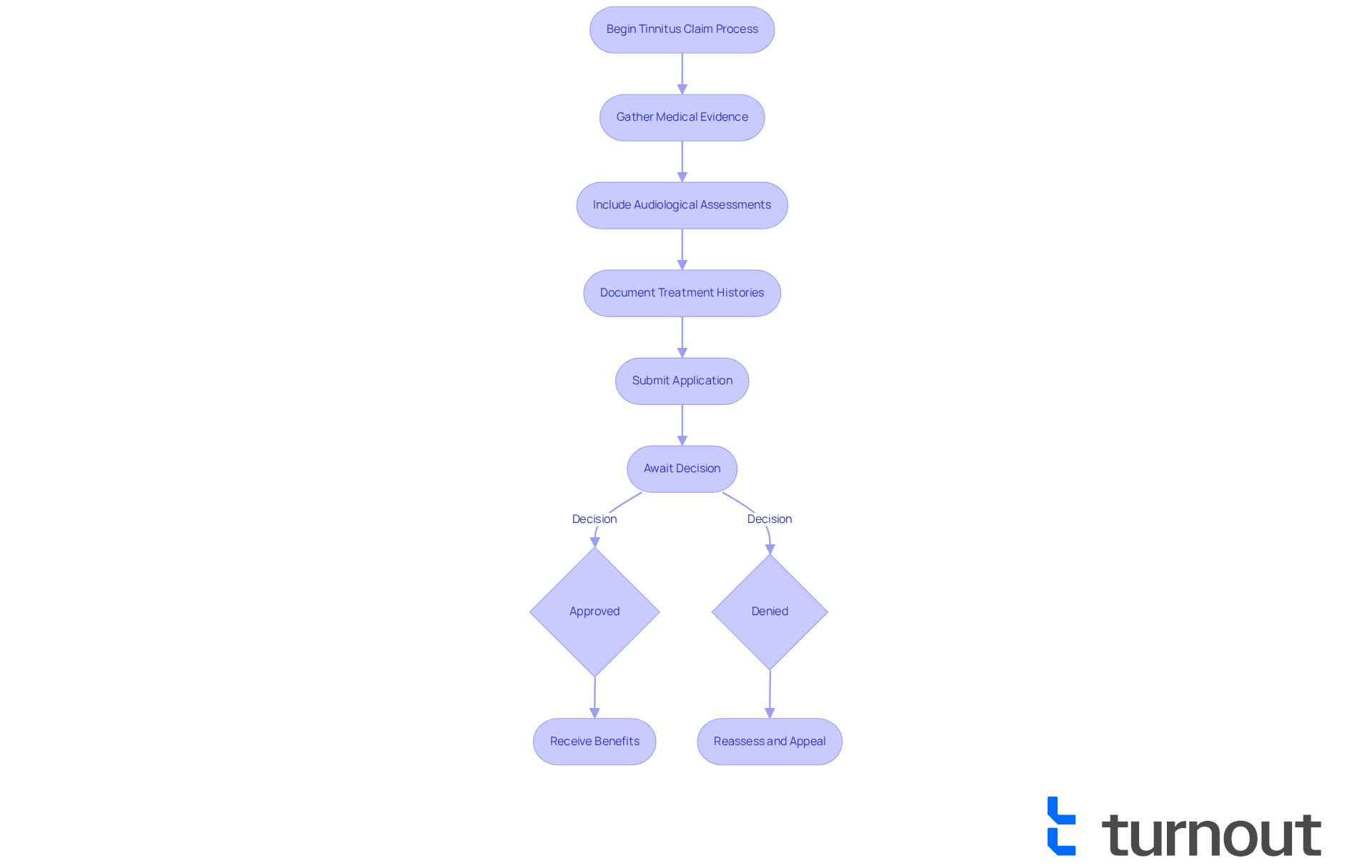
Limitation of Flexion, Knee: A Key VA Disability Claim
We understand that facing restrictions in bending your knee can be a challenging experience, especially for those who have encountered injuries or mobility issues. It’s important to recognize the . To support your journey, we encourage to gather , including imaging studies and treatment histories. These documents can clearly illustrate the .
Proper is essential. It not only helps in determining the seriousness of your condition but also highlights how it affects your everyday activities. Remember, you are not alone in this journey. We're here to help you and understanding.
Paralysis of the Sciatic Nerve: Common VA Disability Claim
can lead to debilitating pain and mobility issues, often stemming from injuries sustained during military service. We understand that navigating the complexities of this condition can be overwhelming. for this condition should record their symptoms comprehensively, including any treatments received and the effect on their daily functioning. A thorough medical assessment is essential to validate the assertion, as paralysis of the sciatic nerve ranks among the common , with 92.2% of individuals rated between 0% and 20%.
and services to assist former service members in managing the intricacies of government benefits, including . By employing skilled non-legal advocates, Turnout can required to substantiate their requests effectively. Neurologists stress that damage to the sciatic nerve may result in long-lasting issues, highlighting the necessity of in the process. It's common to feel uncertain about the next steps, but you're not alone in this journey. Veterans should also consider including buddy letters or statements from healthcare providers that corroborate their experiences and the timeline of their symptoms. This additional documentation can significantly strengthen their , as it provides a clearer picture of the challenges faced due to sciatic nerve paralysis.
By ensuring that all pertinent information is presented, former service members can improve their chances of obtaining the benefits they rightfully deserve. Remember, we're here to help you every step of the way.
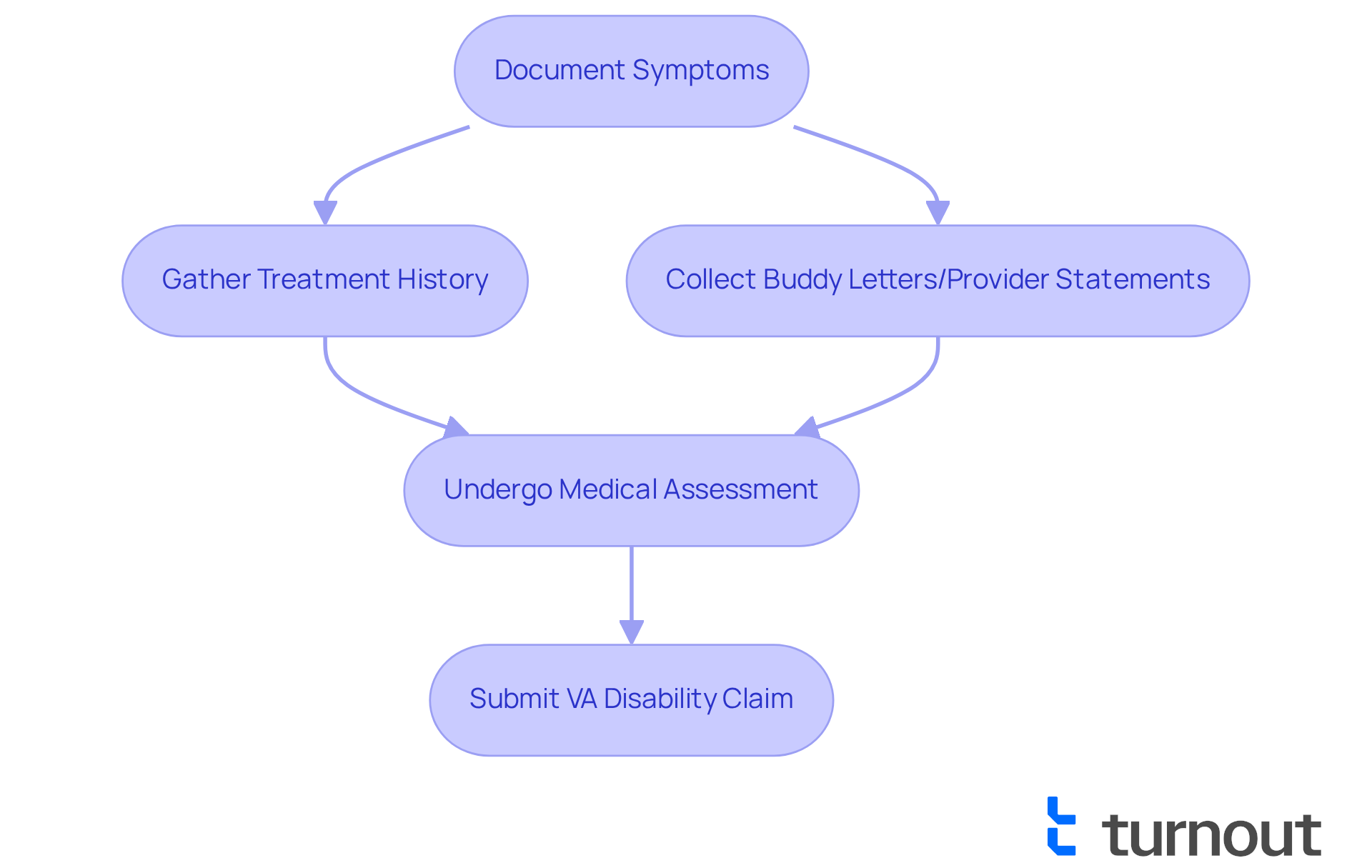
Hearing Loss: A Major VA Disability Claim
is a significant concern for many former military personnel, often resulting from exposure to loud noises during service. We understand that navigating the process of submitting a request can feel overwhelming. To , former service members must undergo a thorough hearing assessment, which typically includes specific tests like the Maryland CNC Test and Puretone Audiometric Test to evaluate the extent of their condition. Additionally, gathering , such as audiograms and personal statements that explain how hearing loss impacts communication and social interactions, is crucial.
The success rates for hearing loss applications are encouraging, with many service members obtaining based on the extent of their impairment. For instance:
- An individual with a hearing loss of 56-65 decibels may receive a 30% disability rating.
- Those with complete hearing loss in both ears could be entitled to additional compensation.
It's essential for veterans to submit and its impacts, as this can greatly affect the outcome of their requests. The VA rates hearing loss according to the severity of the condition and assigns a percentage rating that determines the level of disability compensation.
Real-world examples highlight the importance of thorough evidence submission. Veterans who have effectively managed the application process often share the necessity for clear records of their hearing problems and the effects on their quality of life. Expert opinions emphasize that are vital for establishing a service connection, as they provide the necessary medical documentation to substantiate requests.
If a former service member's request for hearing impairment is rejected, they have the through multiple phases, including submitting a Notice of Disagreement. It’s common to feel discouraged in such situations, but remember, you are not alone in this journey. In summary, former service members looking to submit a request for hearing loss should ensure they possess all necessary documentation, including medical records and personal accounts, to support their requests effectively. Additionally, reaching out to can provide valuable assistance in . We're here to help you every step of the way.
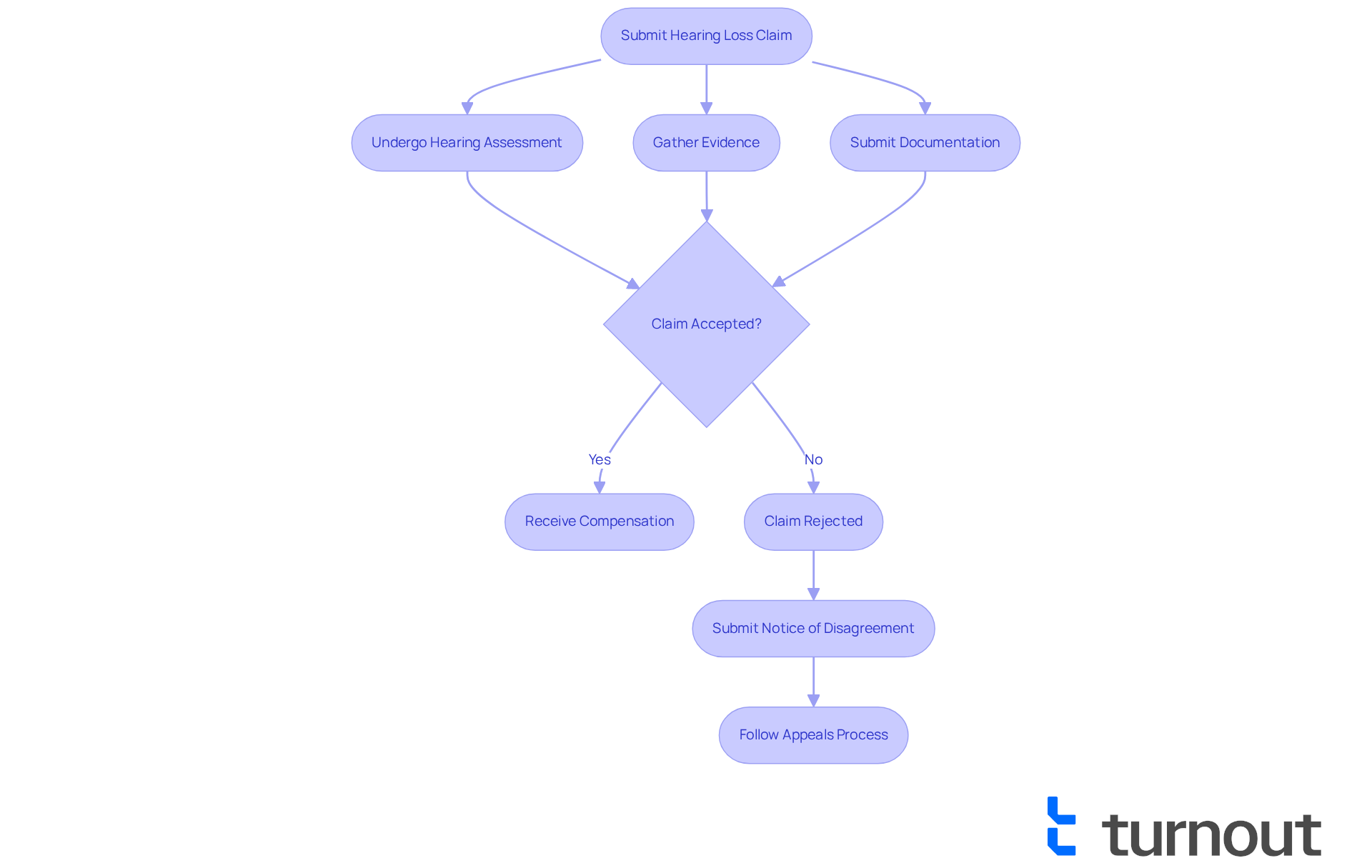
Post-Traumatic Stress Disorder (PTSD): A Common VA Disability Claim
Post-Traumatic Stress Disorder (PTSD) is a significant concern for many former military personnel. We understand that these challenges often stem from traumatic experiences during military service. To effectively obtain , it's essential for former service members to gather . This includes:
- Medical evaluations
- Treatment histories
- Personal statements that illustrate how PTSD impacts daily life
Statistics show that a well-documented claim can greatly enhance the chances of approval. For instance, individuals who present thorough evidence often experience increased success rates. Experts emphasize that clarity and thoroughness in documentation are vital, as they help establish the connection between military service and the condition. Successful cases reveal that former service members who carefully record their experiences and treatment are more likely to obtain the benefits they rightfully deserve.
Comprehending the specific requirements for PTSD applications is crucial for those seeking assistance. This understanding enables former service members to with confidence. Furthermore, , including . This assistance helps service members compile the necessary documentation for their SSD applications effectively, ensuring they have the support needed to navigate the process without legal representation. Remember, you are not alone in this journey; we're here to help.

Limitation of Motion of the Arm: Notable VA Disability Claim
Restriction of movement in the arm can be a challenging experience for those who have suffered injuries to their upper limbs. We understand how important it is for veterans to document their journey. Compiling and treatments is crucial. For instance, when arm motion is limited to 45°, it is rated at 30% for the major arm and 20% for the minor arm.
These records are of the condition and its impact on daily life. Research indicates that common often yield positive outcomes, particularly when supported by thorough medical evidence. Rehabilitation professionals emphasize that can significantly influence the success of requests. They provide objective proof of the functional challenges faced by former service members.
As one expert noted, "Precise records are essential; they not only bolster the assertion but also highlight the real effects of these injuries on former service members' everyday experiences." For those seeking related to arm injuries, organizing all relevant medical records can greatly enhance the chances of a favorable outcome. Remember, you are not alone in this journey, and we’re here to help you .
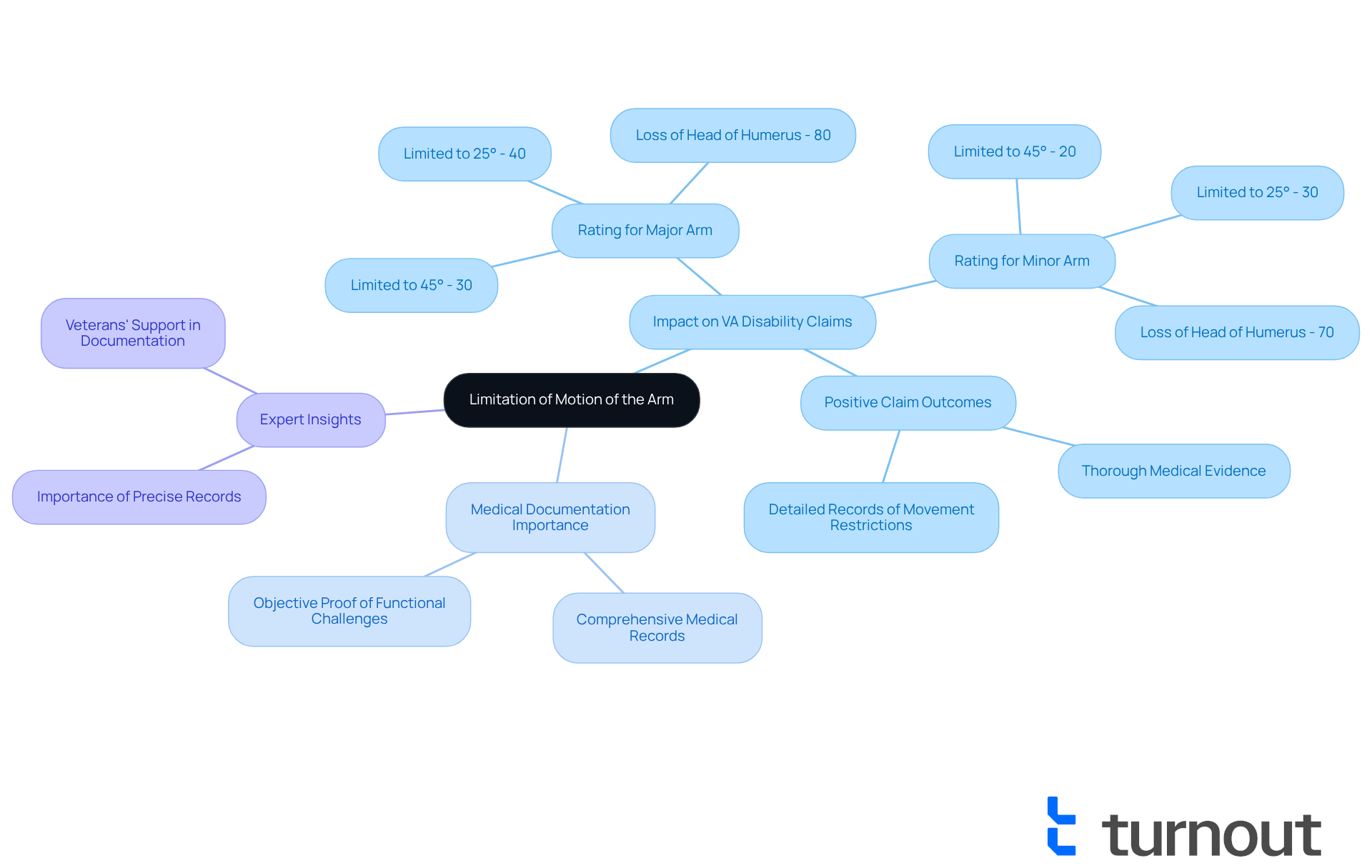
Limitation of Motion of the Ankle: Common VA Disability Claim
Restriction of movement in the ankle is a concern many face after experiencing injuries or developing issues with their lower limbs. We understand how challenging this can be. To ensure a , it is essential for you to carefully record your symptoms, detailing any treatments received and how these restrictions impact your daily activities. A comprehensive in supporting your assertion, as it provides vital proof of the severity and functional effects of your ankle condition.
Physical therapists often emphasize that ankle restrictions can significantly impede mobility and overall . It's common to feel that even minor limitations in ankle motion can lead to compensatory movements, resulting in further injuries or chronic pain. Encouragingly, success rates for claims related to have shown positive outcomes, particularly when individuals provide thorough documentation and medical assessments. For instance, those with service backgrounds who effectively illustrate their and personal accounts have experienced higher approval rates for their claims. This highlights the importance of a well-organized application process.
Remember, you are not alone in this journey. We’re here to help you navigate these challenges and ensure that your voice is heard.
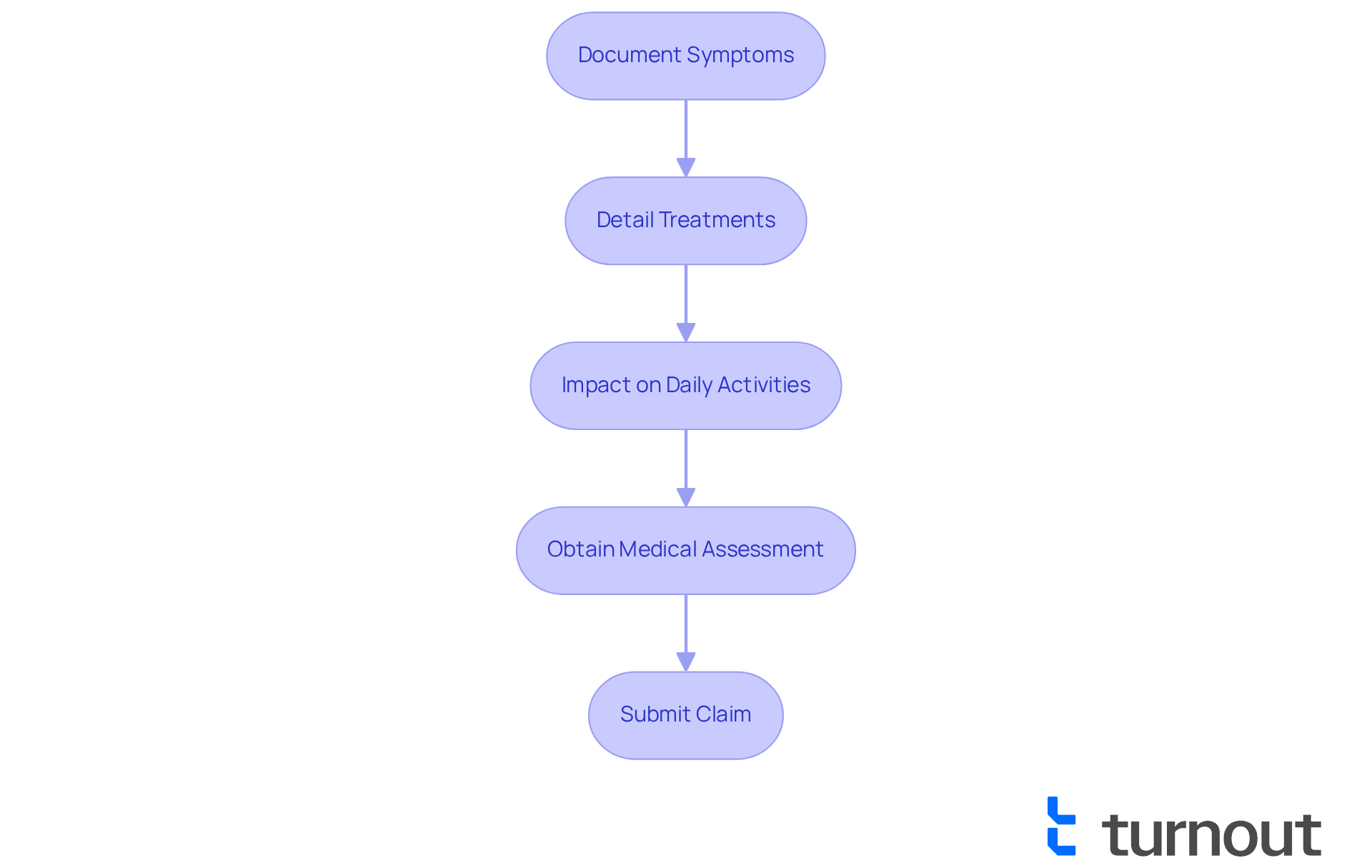
Migraines: A Commonly Claimed VA Disability
Migraines can be a significant challenge for many former service members, often worsened by stress and other factors related to military life. We understand how difficult this can be. To help secure for migraines, it's important for veterans to keep a . This log should include the frequency, duration, and severity of headaches, acting as vital evidence in the claims process.
Additionally, are crucial in supporting [common VA disability claims](https://news.va.gov/7769/getting-your-claim-processed-favorably-and-quickly-some-helpful-hints). Data shows that common VA disability claims backed by comprehensive evidence tend to have a higher success rate. Many veterans have successfully obtained benefits by filing common VA disability claims after providing detailed descriptions of their experiences.
Experts recommend using a to simplify the process. This tool allows you to present your medical evidence in a clear and organized manner. Real-world stories highlight that veterans who actively engage in their claims—by submitting all relevant documentation—often receive quicker approvals.
By taking these steps, you can enhance your chances of receiving the support you deserve for your . Remember, you are not alone in this journey, and we’re here to help you .
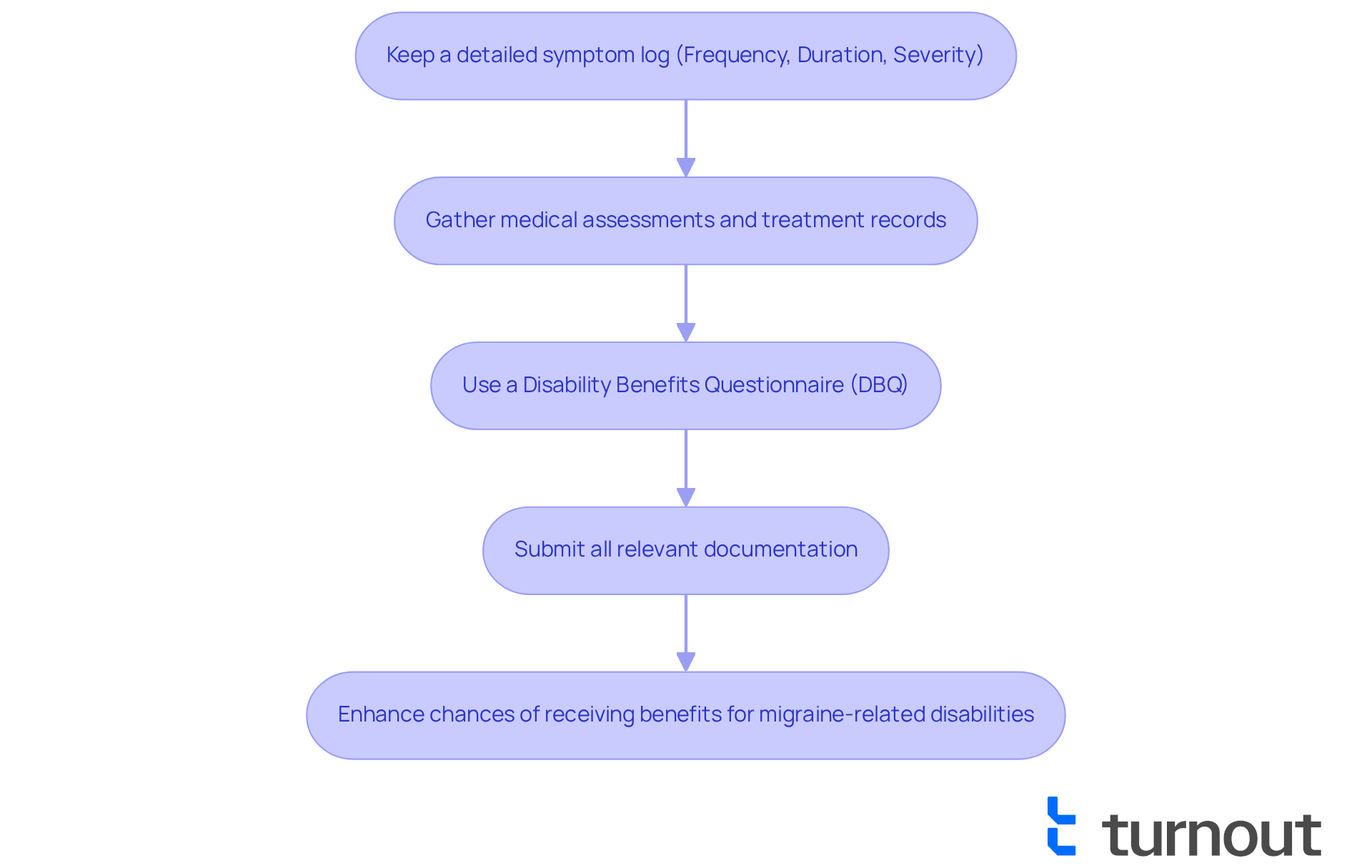
Scars/General Conditions: Common VA Disability Claims
Scars, along with other conditions, can qualify for if they stem from injuries sustained during military service. We understand that can be challenging. Veterans aiming to secure benefits for scars should thoroughly , including their size, location, and any associated symptoms. Medical evaluations play a vital role, as they provide an objective assessment of the scars' impact on functionality and appearance.
Personal statements that articulate how these scars affect daily life are equally important. Have you considered adding color photographs of your scars in your submissions? Visual evidence can greatly influence the VA's assessment process. Dermatologists stress that scars can have significant on former military personnel, influencing their self-esteem and social interactions. As Bill Taylor, Co-Founder of Veterans Guardian, insightfully notes, 'The most frequent VA Disability Request is tinnitus,' highlighting the competitive environment for submissions.
have been recorded for scars, with many veterans obtaining . In fact, scars rank as the 10th most compensated among [common VA disability claims](https://vetsguardian.com/blog/top-10-most-common-va-disability-claims), underscoring the importance of thorough documentation. The VA evaluates common VA disability claims for scars based on various factors, such as size, location, and related symptoms, with a significant proportion of submissions resulting in positive outcomes. However, it's common to feel discouraged, as most former military personnel are assessed at 0% for skin issues. This highlights the difficulties they encounter when seeking benefits for scars. By meticulously documenting their conditions and providing comprehensive evidence, veterans can enhance their chances of approval for common VA disability claims related to scars. Remember, you are not alone in this journey; we're here to help.
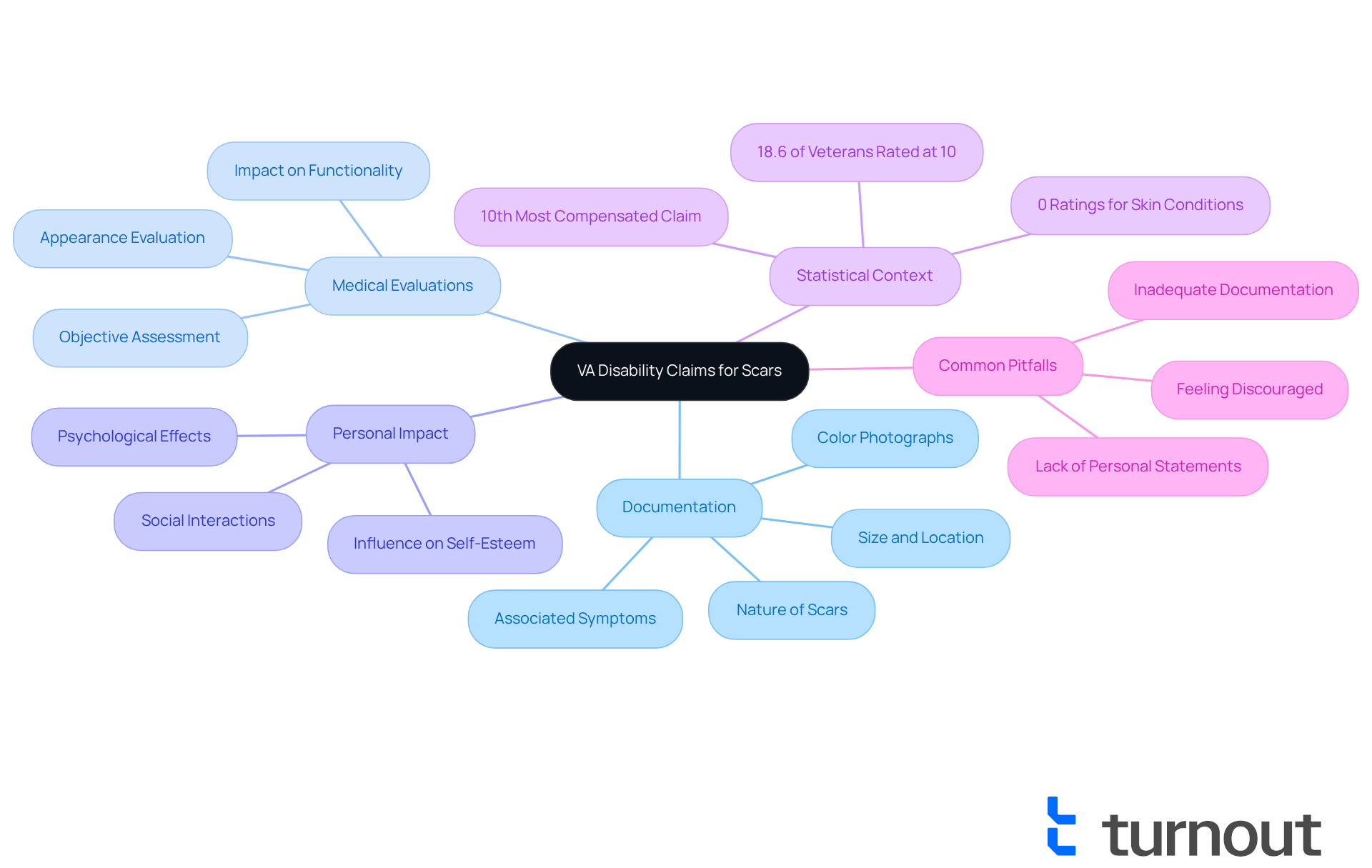
Conclusion
Navigating VA disability claims can feel complex and overwhelming for many veterans. We understand that this journey can be daunting. However, by familiarizing yourself with common claims and the resources available, you can ease this process significantly. The integration of AI technology, as illustrated by platforms like Turnout, streamlines the claims process, making it more efficient and less stressful. This innovation not only enhances communication but also boosts the likelihood of securing the benefits you rightfully deserve.
Throughout this article, we have discussed key insights into various common VA disability claims, including tinnitus, knee flexion limitations, and PTSD, among others. Each section stressed the importance of thorough documentation, such as medical records and personal statements, to support your claims effectively. The success stories shared demonstrate that veterans who actively engage in their claims process, armed with comprehensive evidence, often experience higher approval rates.
Ultimately, the significance of these claims extends beyond mere financial compensation; they represent recognition of the sacrifices made by veterans and the ongoing support you need. It is crucial for you to remain informed and proactive in your claims journey. By leveraging available resources and understanding the requirements for each claim, you can navigate the complexities of the VA system with confidence. Remember, while the path to securing benefits may be challenging, you are not alone in this journey—support is available every step of the way.
Frequently Asked Questions
What is Turnout and how does it assist veterans with their disability claims?
Turnout is a platform that transforms how former military personnel manage their VA disability claims by using AI technology. It streamlines the process, helps ensure timely submission of necessary documentation, and keeps individuals updated throughout their claims journey.
How has AI technology improved the VA disability claims process?
AI technology has significantly reduced the processing duration for VA disability claims, with the average time for MRCA Initial Liability submissions decreasing from 210.9 days to 186.2 days. This improvement reflects a commitment to minimizing delays and enhancing efficiency in the claims process.
What are the benefits of using AI tools for VA disability claims?
Veterans have reported that AI tools provide clarity and speed, making the claims process more manageable. Testimonials highlight quick and effective responses when using AI-driven platforms, which alleviates stress and enhances the chances of receiving benefits.
What is tinnitus and why is it a common VA disability claim?
Tinnitus is a condition characterized by ringing or buzzing in the ears, often resulting from exposure to loud sounds during military service. It is a common claim among veterans, with nearly 2.9 million receiving compensation for service-connected tinnitus in fiscal year 2023.
What evidence is needed to support a tinnitus claim?
To strengthen a tinnitus claim, veterans should gather comprehensive medical records, including audiological assessments and treatment histories that detail the onset and severity of their tinnitus symptoms.
How can veterans enhance their chances of getting their tinnitus claims approved?
Veterans can enhance their chances by providing extensive documentation of their symptoms and a history of loud noise exposure during service. Clear and detailed medical evidence is crucial in supporting their claims.
What should veterans do if they are facing limitations of flexion in their knee?
Veterans facing restrictions in bending their knee should gather medical records, including imaging studies and treatment histories, to illustrate the extent of their limitations. Proper documentation is essential for determining the seriousness of the condition and its impact on daily activities.
How can veterans get support while navigating the VA disability claims process?
Veterans are encouraged to seek support and guidance throughout the claims process, as they are not alone in their journey. Organizations and platforms like Turnout are available to help them navigate these challenges with compassion and understanding.




